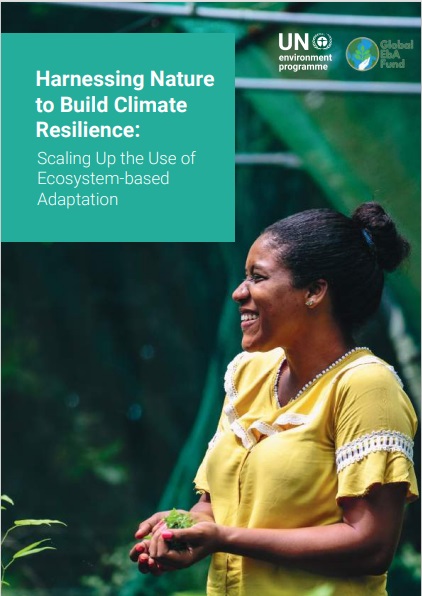🌿 COP 30 - Building a Greener Tomorrow
The 30th UN Climate Change Conference (COP 30) is taking place in Belém, Brazil. Stay informed about global climate actions, negotiations, and live sessions from 10 – 21 November 2025.
Get Updates
Harnessing Nature to Build Climate Resilience: Scaling Up the Use of Ecosystem-based Adaptation

Files
Date
January, 2024Author(s)
- Celia A. Harvey
Abstract
Understanding the current status and trends in EbA implementation is difficult because data on EbA practice, policy and finance are incomplete, scattered and insufficiently detailed. Assessing the extent of action is also complicated due to the large diversity of EbA measures, the wide range of socioeconomic contexts and sectors in which EbA can be applied, and the diverse range of stakeholder groups involved. Nevertheless, our assessment of available information (databases, publications, websites and reports) suggests that there is already substantial EbA action under way. There are at least several thousand EbA initiatives being implemented across the world, with support from a diverse suite of actors, including United Nations organizations, bilateral and multilateral development agencies, multilateral development banks and funds, international NGOs, research organizations, national governments, local communities and the private sector. Since many EbA initiatives are not labelled as such, the number of initiatives is certainly much larger than what is currently documented in the literature. EbA also has significant traction in the international policy arena and features prominently in the Nationally Determined Contributions and National Adaptation Plans of many (but not all) countries. In addition, numerous high-level policy initiatives, reports and declarations have called for greater deployment of ecosystem conservation, restoration and management in support of climate change adaptation. EbA is currently being funded by a small number of key bilateral donors, multilateral donors and climate and environment funds, with public finance for EbA in 2018 estimated to be between US$ 3.8 billion and US$ 8.7 billion in 2018 (Swann et al. 2021). Our assessment suggests that the pace of EbA activity is increasing, albeit at a slow rate. Several key bilateral and multilateral organizations have increased the number of projects using EbA to foster climate resilience. There is a growing number of organizations that have joined collaborative networks that support EbA action. There also appears to be a trend of increasing finance for EbA among some of the major bilateral and multilateral donors. Finally, there has also been a growing number of policy declarations and commitments by multilateral development banks, bilateral donors and others to increase the finance directed towards ecosystem-based approaches. The burgeoning number of publications, case studies, research and guidelines on EbA also points to growing interest in EbA and increased implementation. However, at the same time, the current level of level of EbA implementation falls far short of its potential. The number of EbA initiatives under way, while significant, is too little to have a meaningful impact on the hundreds of millions of people who are threatened by climate change. There is a significant funding gap for EbA, as the amount of available funding falls short of what is needed. International public finance for EbA, for example, still makes up less than 2 per cent of total climate finance flows. There have been numerous high-level calls (such as the Nature-based Solutions for Climate Manifesto (2019)1 , the Leaders’ Pledge for Nature (2020)2 , the Glasgow Climate Pact (2021; (United Nations Framework Convention on Climate Change [UNFCCC] 2021b), and the Glasgow Leaders’ Declaration on Forests and Land Use (2021)3 , to better harness the conservation, restoration and management of ecosystems for delivering climate adaptation, and to significantly scale up financial support for NbS. In short, there is a growing consensus that EbA can play a much greater role in global adaptation efforts.
Citation
United Nations Environment Programme (2022). Harnessing Nature to Build Climate Resilience: Scaling Up the Use of Ecosystem-based Adaptation. Nairobi.
Publisher
United Nations Environment Programme (UNEP), Nairobi
Rights Holder
UNEP
URI
https://knowledgehub.pksf.org.bd/collections/UlFxcE5pQ01rckJyV1hObXRJeW1YQT09
